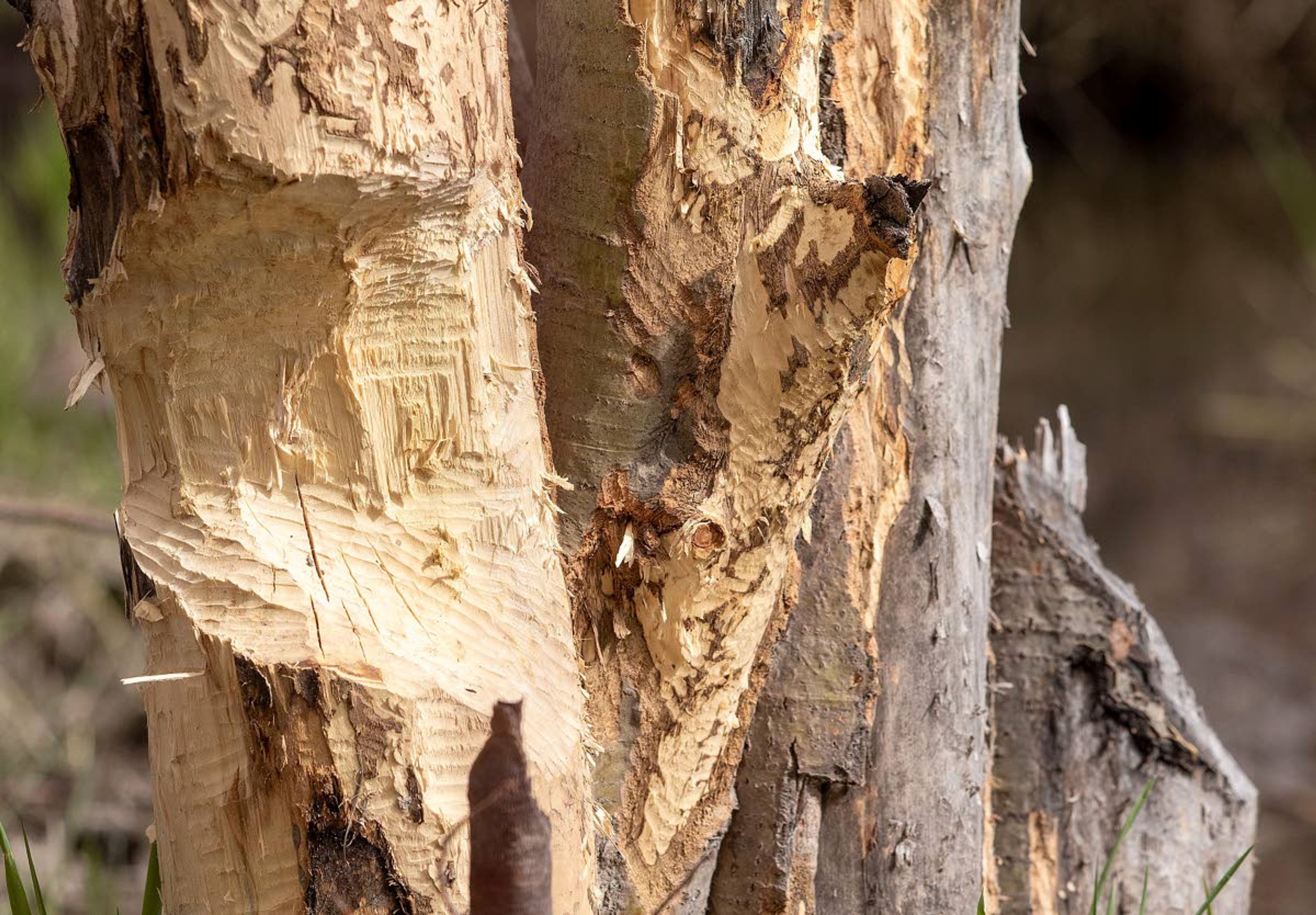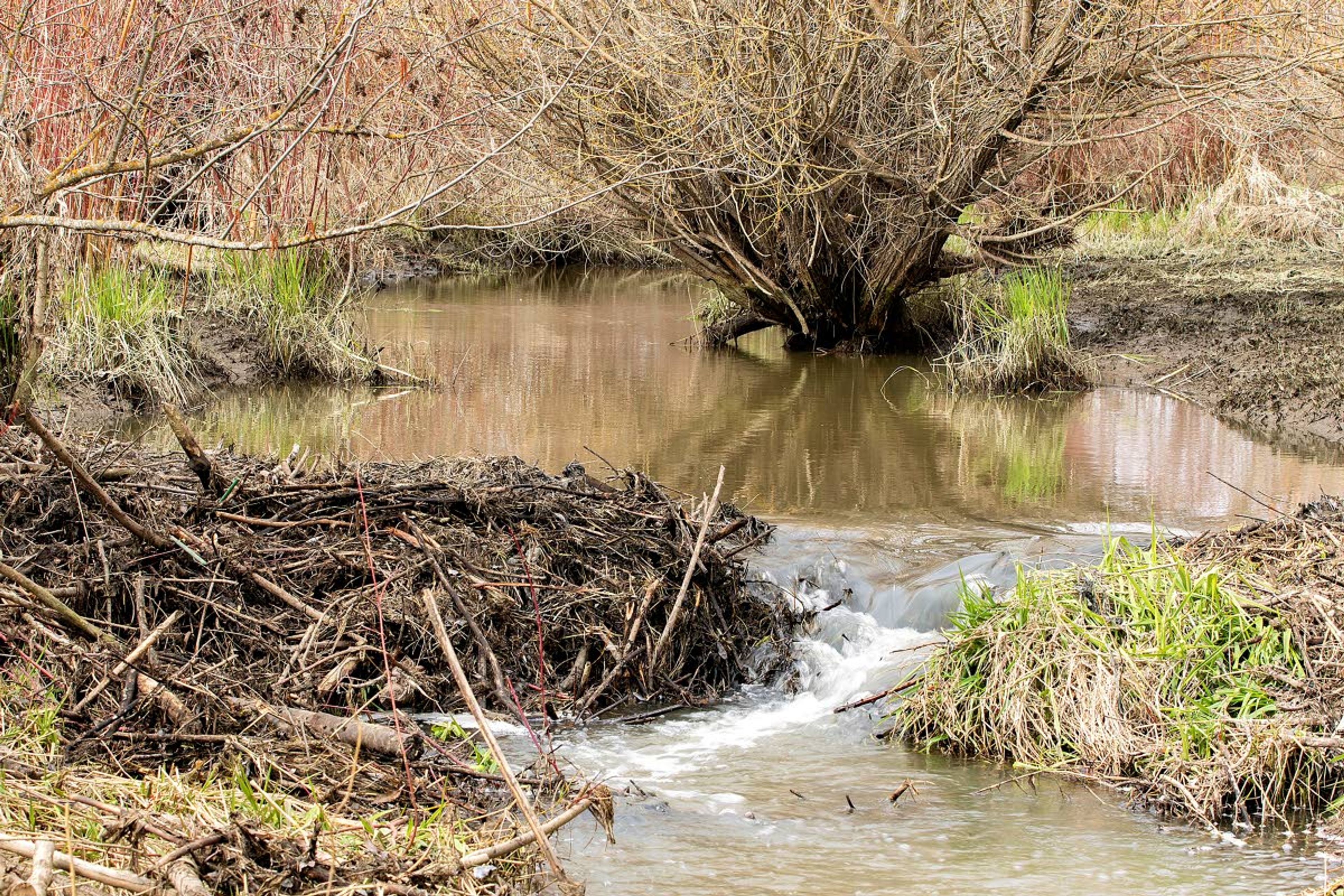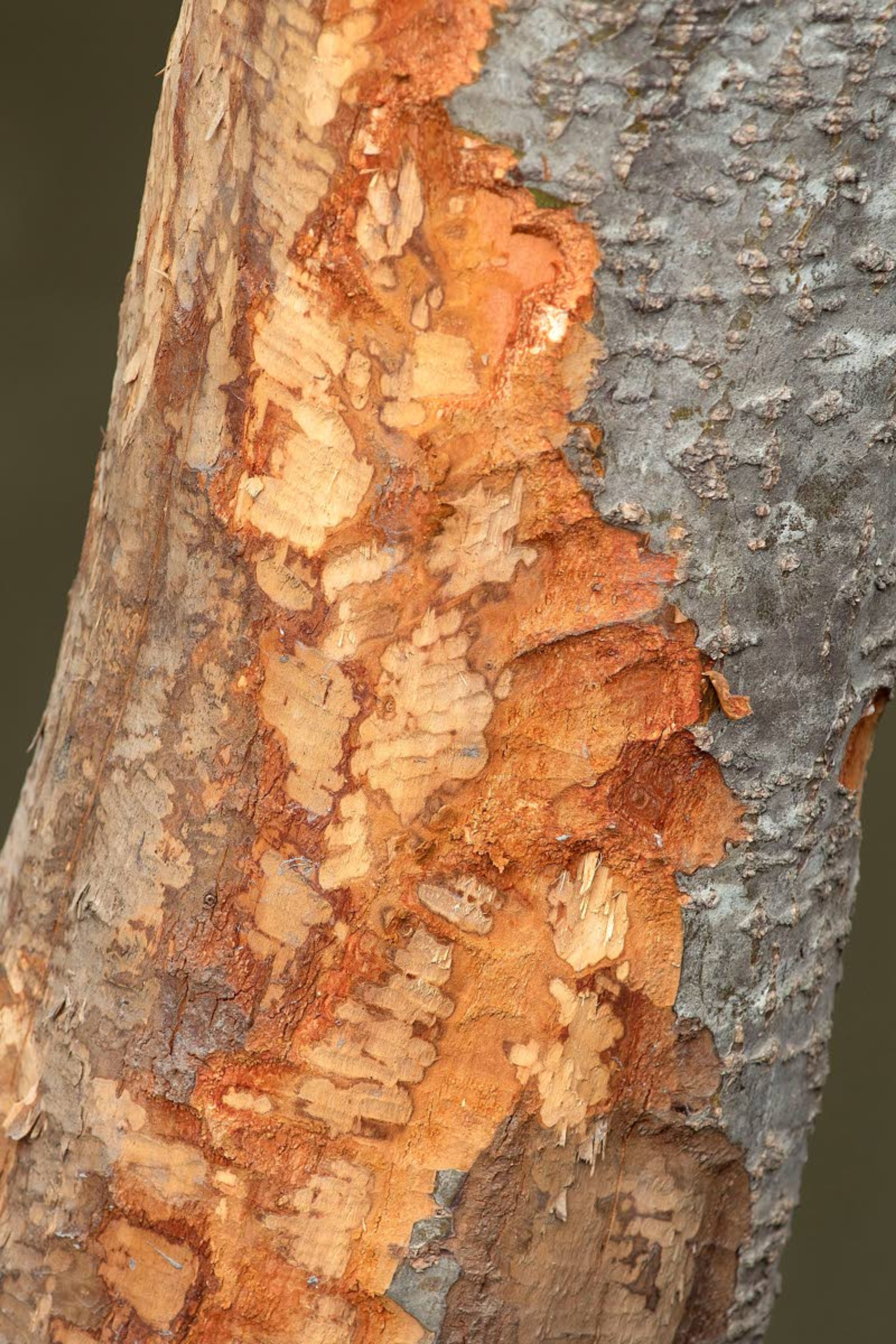Beavers sometimes a ‘nuisance’
Critters were lethally trapped twice since winter at Moscow’s Carol Ryrie Brink Nature Park after they caused flooding, as well as damage to park and private properties
Beavers and beaver dams are common in Moscow’s Paradise Creek.
Most of them are in locations that help promote a more natural, healthy stream and are left undisturbed, said Tyler Palmer, Moscow deputy city supervisor of public works and services.
But this spring, the furry critters built a huge dam at Carol Ryrie Brink Nature Park — located off Mountain View Road near the Moscow School District Community Playfields — causing flooding and damage to nearby properties and the park, Palmer said.
The city hired a trapper, who deployed lethal traps to remove the beavers, and the city removed the dam that was obstructing the creek’s flow. The actions, which were completed last week and early this week, have reduced the water level and appears to have solved the problems.
It was the second time since winter that beavers, or “public nuisances” as defined in city code, were removed from the park and third time in the last five years beavers have been trapped in Moscow.
Palmer does not know how many beavers were trapped in the winter or spring occurrences, but that the city receives a report when the trapper is confident the rodents causing problems have been addressed and the city is able to remove the problematic dam.
Palmer said the city takes a “pretty conservative interpretation” of the city code when handling beavers. If the rodents and their dams are not causing damage or potential damage to people or property, then they will be left alone, he said.
“We try and do our best to leave them be wherever we can,” said Steve Schulte, Moscow streets and stormwater manager. “We don’t mess with them if they’re not messing with us.”
But beavers took over Carol Ryrie Brink Nature Park, Schulte said. Water from Paradise Creek backed up almost to the pathway and they took down a bunch of trees in the walkway area, which prompted the city to take action.
“We enjoy our furry little critters as long as they don’t cause too much issue,” Schulte said. “It’s just when they get out of hand and start destroying considerable amounts of trees or making dams that are large enough to cause, again, big issues. That’s when we have to get involved.”
Palmer said the dam at the park caused the creek to rise to 3 feet in areas where there was no water.
The Moscow Parks and Recreation Department posted signs — which have since been removed when the water levels receded and the area was inspected — at the park asking residents to stay on the pathway because of “hazardous conditions” near the waterway. Palmer said those hazardous conditions referred to the deep water and concerns about trail conditions as the water receded.
Palmer said his staff monitors creek conditions and will break up dams when necessary, often causing beavers to move to a different spot.
“When they get one established or if they’re stubborn about staying in a certain spot, there’s no keeping up with them,” he said.
Even after a dam is removed, beavers can rebuild it overnight, Palmer said.
“They are amazing creatures, man,” Palmer said. “The amount of material that they can move in a very short amount of time — it’s incredible.”
Schulte said the city received a permit to trap the beavers from the Idaho Department of Fish and Game and then hired a private licensed trapper to remove the beavers.
The lethal traps have since been removed from the creek area.
Schulte said the city followed Idaho Fish and Game and the trapper’s guidance about how to remove the animals.
He said Idaho Fish and Game is not interested in relocating beavers, and if the beavers are carrying a disease, the department does not want to spread the disease to another area.
Bill Seybold, Idaho Fish and Game volunteer services coordinator and state trapper education coordinator, estimated lethal trapping is the most common method of trapping Idaho Fish and Game or the trapper the department hires does.
He said relocating beavers is another layer of expense.
“Generally, municipalities — they’re not concerned about where the beavers go,” Seybold said. “They’re concerned about getting rid of the beavers that they have.”
If beavers are causing flooding with the dams they build, Seybold said removing the beavers is essentially the only alternative.
He said trees can be fenced off to restrict beavers’ access to them, but fencing off all vegetation is generally not feasible. Besides wood, beavers use rocks and mud to build dams, Seybold said.
He said Idaho Fish and Game does not require that signs be posted to notify people of trapping.
The benefit of posting signs is people are aware trapping is happening in the area and they can keep themselves and their pets away. On the negative side, an individual could steal or alter the traps if he or she reads that trapping is happening, Seybold said.
He said beaver trapping is typically done in water, but a dog, for example, could enter a creek and get caught in a trap. Lethal traps are encouraged to be set underwater for safety purposes.
He said Idaho Fish and Game asks that when traps are placed that trappers consider pets’ safety, especially in areas where dog-walking is common.
Schulte said he did not know how the traps were set but that the trapper set them in a way that maximized safety.
Janet Hohle, a retiree from the Idaho Office of Species Conservation, said she trapped beavers in Latah County and relocated them to the Potlatch River system to help restore riparian habitats.
Hohle, who lives outside Potlatch, said it is not a good time to trap beavers because females are pregnant this time of year.
To mitigate the rising creek, Hohle said Moscow could have installed a pond leveler, or a culvert through the dam to keep water at a certain height.
She said beavers will return to the Moscow park because it is a good habitat for the rodents.
Pullman Public Works Director Kevin Gardes said there are quite a few beavers but not many dams in Pullman waterways. He said he does not believe the city has trapped beavers in his 15 years with the city.
He said if a dam is clogging a waterway, the city will remove it.
“We tend to deal with effects of it instead of the actual beavers themselves,” Gardes said.
He said it is probably a little more complicated to remove beavers in Washington because of the long, detailed process it requires to gain approval to do it.
Garrett Cabeza can be reached at (208) 883-4631, or by email to gcabeza@dnews.com.









